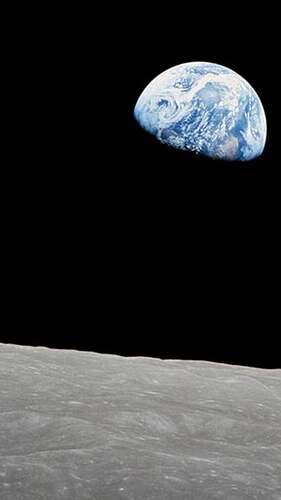One light day. An amazing achievement when you remember it was launched when pong was all the rage.
0.961 light-days tobe precise
The economic success doesn’t come from SpaceX pushing for new frontiers or colonising Mars. It comes from orbital transports, and in the near future possibly from whatever gravity-less conditions enable like growing human tissue, possibly even tailored human organs later on.
From a commercial POV Blue Origin, Virgin Galactic and ULA follow a far more promising approach than the colonisation of Mars. Though it looks like SpaceX is outperforming them anyways.
Who’s counting?
Trump renames the Gulf of Mexico to Gulf of America last Monday. One day after, New Orleans, Florida Panhandle and nearby regions get record snow ![]()
I think that the definition for a planet needs a reworking.
Pluto, once a planet is now a dwarf planet. I disagree, it has it´s own orbit around the sun and a moon of it´s own. But in my idea a planet has it´t own Barycenter around the sun. Just as the moon does not technically orbit earth, earth and moon orbit a common barycenter which is located around 5000 kms offset from the center of the earth.
With that in mind Pluto, Eris, Ceres, Makemake and Gongong usw. are planets. Even though Ganymede, Io, Tritan, Titan etc. are larger they are moons that revolve around a barycenter located near or in the planet they orbit.
Crazy.
Colonisation of other planets? Human organ manufacture in Space? Leave that for Science fiction. Just Donald should get to leave for his golf course on Mars. That would be neat.
Space X is all about communications satellites for civilian and military purposes and maybe a few warheads/defence systems.
“There are no more new frontiers. We have to make it here” https://www.youtube.com/watch?v=p4zR9r9olOg
There’s people building big rockets but no one is solving two fundamental big problems. Those astronauts spending months revolving the Earth have shown lack of gravity and ionizing radiation would just kills us after X months in space.
It’s a rough estimate, but 1 day in space is equivalent to 1 year of radiation in Earth’s surface. Spacecraft can be shielded, but anyway the doses would probably cause severe health decay even before reaching Mars.
Also astronauts have spent around 1 year without gravity and this destroys their bodies. Muscle and bone loss, potential loss of sight and how knows what else fails after longer times. Astronauts can’t walk anymore after one year orbiting around Earth.
So, spacecraft can be built, but space will just kill us. Current development is only useful for robot missions.
Can’t you have spinning spacecraft to simulate gravity, or has sci-fi been lying to me this whole time? As for radiation, I assume we could come up with some version of magnetic shielding that could work.
Simulated gravity requires bigger and differently structured vessels than what we have now. A few dozens meters in diameter at least and of course balanced, ideally ring as the outer rim.
But that won’t be without issues either. Moving around will automatically create imbalances and potential instabilities. ISS’s mass is about 420 tons, in a structure designed to rotate you probably want most of that close to the rotational axle. But the astronauts need to be far out to enjoy the (partial) simulated gravity. Now imagine the effect if many/all met at one point in the outer rim (maybe they have a party) - you’d probably need something like mass lifts elsewhere for balance. So perhaps in practice it’s better to have multiple beams instead.
The problem with any shielding is the extra weight you add that in turn requires more fuel that increases weight and so on ad infinitum
The spinning rings made great TV, but there was smarter people in the 1960s. Why not just use a cable?
Anyway, it’s a huge challenge.
The Gemini XI weighed a 4 tons, a speck of dust compared to a fullblown space station, and they produced 0.00015 g only.
Reduced gravity, as thought to be necessary, is something like 0.4 g
All valid arguments against…
But with manned spaceflight expanding the cost of delivery to orbit drops. Also spacecraft shielding is not the issue, experiments have been done that prove you can build an electromagnetic shield around the habitat sections of a spacecraft.
The reason it is not done on orbital flights is that they are still below the earths magnetic field and dont require the shielding you would need for an interplanetary voyage.
And of course there are big problems right here on earth that need solving, there will always be big problems on earth that need solving even if we fly to Mars or not.
But by far the largest contribution to mankind resulting out of manned spaceflight is that we went to the moon and discovered earth.
This one picture frpm 1968 alone did more to make us realize what we have on earth than anything else i can imagine.
See also Andy Weir’s solution in “Hail Mary”. Radiation is also dealt with.
The Gemini XI weighed a 4 tons, a speck of dust compared to a fullblown space station, and they produced 0.00015 g only.
Mass is largely irrelevant. You just need to set the radius of the ring and the rotational speed and that’s it. A ring of 30m radius spinning around 6 RPM sould be enough to generate Earth-like gravity.
I liked his book “the martian”
Mass is relevant for the forces involved, they drive the requirements on the materials. The example mentioned used a rope between two bodies.
It’s the other way round, reduced cost and price increases demand. Reusability isn’t the only factor in that but it’s definitely a big one. Plus going forward also large volume rocket production (think automation).
What I mean is that mass is secondary. If you had massless materials to make it out of, you could do so.



![Wanderers - a short film by Erik Wernquist [Official Version]](https://img.youtube.com/vi/YH3c1QZzRK4/maxresdefault.jpg)
